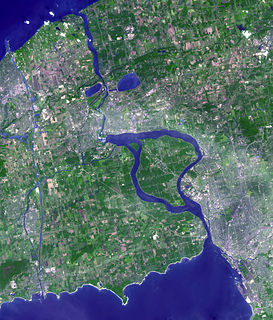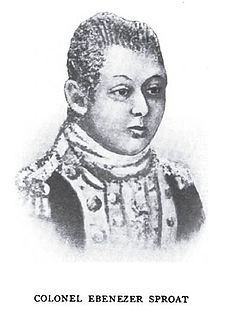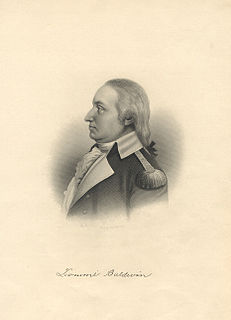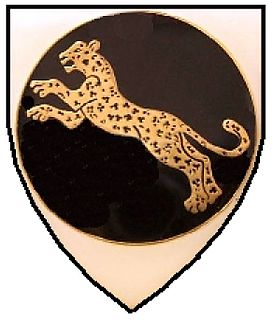See also
| This page lists people with the surname Heitman. If an internal link intending to refer to a specific person led you to this page, you may wish to change that link by adding the person's given name(s) to the link. |
Heitman is a surname. Notable people with the surname include:
Betty Green Heitman was a Republican activist from Baton Rouge, Louisiana. From 1978 to 1980 she was president of the National Federation of Republican Women. During her tenure the organization achieved financial independence from the Republican National Committee in Washington, D.C. She also prodded U.S. Presidents Ronald W. Reagan and George Herbert Walker Bush to appoint more women to executive government offices.
Dana Conrad Heitman is an American musician, known for his work as the trumpeter for the Eugene, Oregon ska-swing band the Cherry Poppin' Daddies, of which he has been a member since the band's formation.
Jack Heitman was an Australian farmer and politician who was a member of the Legislative Council of Western Australia from 1963 until his death, representing the Liberal Party.
| This page lists people with the surname Heitman. If an internal link intending to refer to a specific person led you to this page, you may wish to change that link by adding the person's given name(s) to the link. |
The 8th North Carolina Regiment was authorized on November 26, 1776 and assigned to the Southern Department of the Continental Army. The unit saw action at the Battle of Brandywine and Battle of Germantown during the American Revolution. The Regiment was commanded by Colonel James Armstrong. The regiment was disbanded on 1 June 1778 at Valley Forge, Pennsylvania.

The Connecticut Line was a formation within the Continental Army. The term "Connecticut Line" referred to the quota of numbered infantry regiments assigned to Connecticut at various times by the Continental Congress, the size of its allocation determined by the size of its population relative to that of other states. These, together with similarly apportioned contingents from the other twelve states, formed the Continental Line. The concept was particularly important in relation to the promotion of commissioned officers. Officers of the Continental Army below the rank of brigadier general were ordinarily ineligible for promotion except in the line of their own state.

The Massachusetts Line was the name given to those units within the Continental Army that were assigned to Massachusetts at various times by the Continental Congress during the American Revolutionary War. These, together with similar contingents from the other twelve states, formed the Continental Line. Line regiments were assigned to a particular state, which was then financially responsible for the maintenance of the regiment. The concept of the line was also particularly important in relation to the promotion of commissioned officers. Officers of the Continental Army below the rank of brigadier general were ordinarily ineligible for promotion except in the line of their own state.
Heitmann is a German surname. Notable people with the surname include:
Ballard Smith was a soldier and congressman from Virginia.
Samuel Shepard Conner was a U.S. Representative from Massachusetts.

The Battle of Frenchman's Creek took place during the War of 1812 between Great Britain and the United States in the early hours of November 28, 1812, in the Crown Colony of Upper Canada, near the Niagara River. The operation was conceived as a raid to prepare the ground for a larger American invasion. The Americans succeeded in crossing the Niagara and landing at both of their points of attack. They achieved one of their two objectives before withdrawing but the invasion was subsequently called off, rendering useless what had been accomplished. The engagement was named, "the Battle of Frenchman's Creek" by the Canadians, after the location of some of the severest fighting. To contemporary Americans, it was known as, "the Affair opposite Black Rock".
Heitman Analytics is a mortgage loan data reporting and consulting firm based in Eugene, Oregon, USA. The company provides North American brokers, correspondent, wholesale and retail lenders with analytic services and up-to-date mortgage pricing and volume data, including pricing reports, mortgage volume analytics, risk-based pricing information, volume reports, market movement/trend reports, HELOC and home equity loan reports, lender-based loan fee reports, mystery shopping surveys, and construction-to-permanent analysis. Heitman Analytics also offers its clients an interactive website to create custom reports and analysis from its pricing and volume data.

Ebenezer Sproat, surname also spelled Sprout, was an officer of the Continental Army during the American Revolutionary War, a pioneer to the Ohio Country, and one of the founders of Marietta, Ohio, the first permanent American settlement in the Northwest Territory. He served throughout the entire American war of independence, from April 1775 through November 1783, achieving the rank of colonel. After the war, he was a pioneer and surveyor in the Northwest Territory, and became a leader of the militia at Marietta during the Northwest Indian War. He was the first sheriff in the Northwest Territory and Ohio, serving fourteen years as sheriff of Washington County, the oldest county in Ohio.

The 26th Continental Regiment was an infantry unit of the Massachusetts Line during the American Revolutionary War. Gerrish's Regiment was raised in the early days of the war, and the regiment underwent name changes as the Continental Army was reorganized in 1776 and 1777. From 1777 onward, the unit was known as the 9th Massachusetts Regiment.
Fort Nichols was a fort that existed in 1775 in Amesbury, Massachusetts. It was also known as Fort Merrimac during its existence. Two possible locations for the fort existed, although the coordinates lead to the one at a location named Salisbury Point on maps.
The Fort at Salisbury Point was a fort that existed between 1863 and 1865 in Salisbury, Massachusetts. It was located at the mouth of the Merrimack River, where eventual erosion washed it away.
Old Stone Fort was a fort that existed in 1814 in Rockport, Massachusetts. It was also known as Sea Fensibles Barrack during its existence. Today, a plaque is located on the Transit Tower, which was built on the site of the fort. Stones from the former fort were used in the construction of the harbor's breakwater.
Fort Philip was a fort that existed in 1776, and 1808 to around 1815 in Newburyport, Massachusetts on the northern end of Plum Island, known as Lighthouse Point. It was reinforced in the 1800s, although the site eventually washed away.
Camp Hobson was a military camp that existed during the Spanish–American War in 1898 in Gloucester, Massachusetts. It was located near the works known as Stage Fort, Fort Banks, Fort Cross, and Fort Allen during their intermittent use. Restored in 1930, it is now located on land belonging to Stage Fort Park.
Fort Standish was a fort that existed from 1863 to the 1920s in Plymouth, Massachusetts. It was located on Saquish Head, and became a reservation in 1870. The land was sold in 1925 to a private buyer.

911 Battalion was part of the South West African Territorial Force's 91 Brigade.

301 Battalion was part of Sector 30 of the South West African Territorial Force.